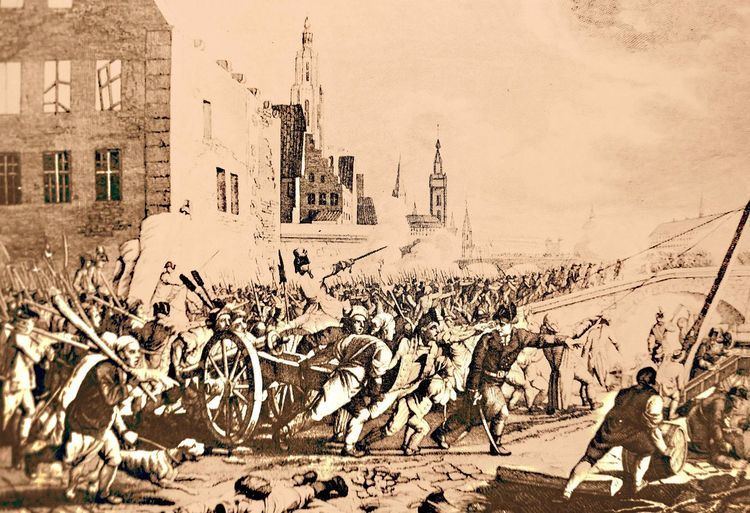Allegiance Habsburg Monarchy Years of service 1762–1799 | Rank General-major Name Ludwig de | |
 | ||
Born 13 March 1747Mons ( 1747-03-13 ) Died 14 October 1804 (1804-10-15) (aged 57)Mons, present day Belgium Service/branch Colonel and Proprietor, 36th Infantry Regiment Battles/wars Habsburg War with the Ottoman Empire (1787–1791)War of the First Coalition (1792–1797)War of the Second Coalition (1799–1802) | ||
Ludwig Wolff de la Marselle or Ludwig Dominik Joseph Regis Wolff de la Marselle (13 March 1747 – 14 October 1804) was a general in Habsburg Austrian service in the French Revolutionary Wars. He was born and died in Mons, Austrian Netherlands (present-day Belgium).
Contents
Military service
At the age of 14 he joined the Infantry as a Cadet; by age 23, he was an officer, in the 38th Infantry Regiment (L'Aisne). At the beginning of Austria's wars with Turkey, 1788, he was a major in the Gemmingen Infantry. In 1790 he served in Habsburg military to suppress the uprising in the Austrian Netherlands, with particularly distinguished service at the Battle of Falmagne, after which he was promoted to lieutenant colonel of the Clerfayt Infantry N. 9, a Walloon regiment. In 1794, he acquired command of the Grenadier Battalion Rousseau and fought with this regiment during the Rhine Campaign of 1795 in the Army of the Upper Rhine under command of Dagobert Sigmund von Wurmser. At the 1795 Siege of Mannheim he led his grenadiers in a special night foray on 10–11 November along the shore of the Neckar River, skirmishing with French troops; his regiment stormed both Schwetzingen and Heidelberg by bayonet. Wurmser commended the outstanding bravery of the grenadier battalion commander and attached the Wolff's battalion to the main army. In April 1796, Wolff was attached to the column of Archduke Charles by the Lahn river. On 19 June, he participated in the engagement by Uckerath, and defended the left wing of the retreat against the French army under Kléber. During the Coalition's withdrawal from the Upper Rhine, he led the smallest of the four Austrian columns (three battalions and four squadrons) along the length of Lake Constance’s northern shore, via Überlingen, Meersburg, Buchhorn, and the Austrian city of Bregenz.
Swiss and Italian campaigns of 1799
In the campaign of 1799, Wolff participated in the battles at Ostrach and Stockach as part of the advance guard of Archduke Charles' army. In late May, he held a group reserve of over 3,000 troops in the Valtelline, on the Lombard border with Switzerland, where he supported Gottfried Strauch's suppression of the Cisalpine revolutionaries. By June he was in northern Italy, with Konrad Valentin von Kaim's Turin division, where he commanded a mixed brigade of infantry, dragoons and grenadiers at the Alessandria garrison. Later that year he commanded a corps of the grenadiers Bellegarde in Switzerland, participating in the Swiss counter-revolution against the French in the Engadin valley. In 1800, he also participated in the Battle of Marengo, commanding the Archduke Josef Infantry Regiment (No. 63), again as part of Kaim's division.
He was colonel of the Clerfayt Regiment in 1798, although it is unclear when this promotion actually took place; in September 1799 he was promoted to major general and his promotion papers specifically referenced his leadership at Uckerrath. He received the Military Order of Maria Theresa on 18 August 1801. He retired from military service after 41 years in May 1801, and returned to his hometown of Mons, where he died in 1804, at the age of 58.
